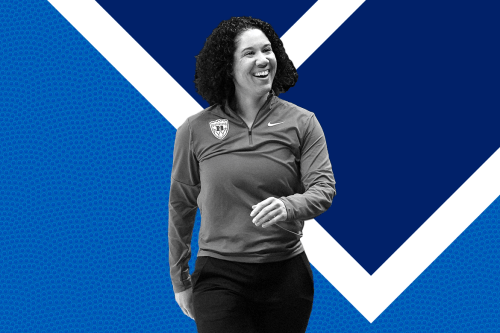Our editors independently select these products. Making a purchase through our links may earn Well+Good a commission
Compatible and clashing personalities are bound to cross paths at the office. Who among us hasn’t longed for a sorting hat (à la Harry Potter) to categorize coworkers into houses depending on their traits? While there isn’t yet a magical headpiece to determine whether Suzie in the cubicle next to the kitchen is a Gryffindor or a Syltherin, the Well+Good staff got to know one another a little better with a work personality test that helps team members find their cardinal direction
“The Personality Compass” is a 5-minute (or less) quiz first outlined by Diane Turner in The Personality Compass: A New Way to Understand People. By filling out a brief questionnaire, you learn which arrow of the compass aligns with your temperament. The objective of discovering your true north (or east, or south, or west) is simple: to identify how your own sensibilities differ from your colleagues so that everyone can better understand—and collaborate—with one another.
“Each type is different,” reads the instruction sheet for the test. “Each has different preferences, different strengths, different weaknesses, and different points of view. At times those differences can create difficulties and clashes, but if we understand the differences we can find ways to work together and that can become a great strength!”
While the sorting hat prompts Harry Potter spends the better part of seven books distrusting everyone who’s not in his own house, the personality compass is meant to inspire engagement and collaboration with your colleagues. You’ll learn to appreciate everyone’s unique talents to create a more synergetic environment. Let’s break down each work personality, shall we?
- North: These individuals are focused on goals, goals, goals. They’re confident, decisive, independent, and love to check off a task.
- South: Meet the team players of the group who check in with everybody’s vision and feeling before getting started. Their inclusive approach includes is highlighted by superior patience and listening skills.
- East: These people thrive on well-laid plans. They approach their jobs with logic, organization, and a bird’s-eye view. They consider the outcome of a project in its totality at the time of ideation.
- West: Like Northerners, western employees take risks in the office. However, they’re driven more by creativity, vision, and enthusiasm than quick action. They strive for originality.
You can classify yourself right on the spot, find your type and sub-type, or even read about which careers are best suited for your personality. It’s all in this one-sheeter! Go ahead, choose your own (work) adventure. As a group exercise, answering and discussing a series of questions challenges you and your colleagues to examine ways to work better together. Breaking into small groups by direction, talk through the following questions with your similarly oriented coworkers. Then, return to the larger group to share your thoughts with the rest of your team.
- 1.What are the strengths of your direction? (3-4 adjectives)
- 2.What are the limitations of your direction? (3-4 adjectives)
- 3.Which direction do you find most difficult to work with and why?
- 4.What do people from other “directions” or styles need to know about you so you can work together effectively?
- 5.What’s one thing you value about each of the other three directions?
There are no wrong answers here. The most successful teams are a mix of employees and managers representing each of the cardinal directions. “The power in understanding directional type comes in using it to better understand you and those around you, meaning you have to know their directional types as well,” explains Sabrina Baker, SHRM-CP, CEO of Acacia HR Solutions. “Individuals can use their directional type to fully understand and leverage their strengths and supplement their weaknesses (through other types).”
From a manager’s perspective, knowing the distinctions between each personalities can help you delegate tasks to the person most-suited to crush them. (For example, you might give a needed this yesterday kind of assignment to a northerner.) Same goes if you’re someone who’s still climbing the corporate ladder. Knowing your bosses tendencies can help you deliver assignments just the way they want them. Your boss is a west? Try delivering your finished projects with one-of-a-kind creativity.
Your takeaways should be your own, but the staff at Well+Good knows now (from personal experience!) that talking through the strengths and limitations airs out potential insecurities in a super constructive way. Even better, it gives your colleagues the opportunity to offer a high five for your unique skill set.
Personality tests abound! Here’s how to use Myers-Briggs to find out what might lead to burnout. And these are the three personality traits shared by “everyday saints.“
Sign Up for Our Daily Newsletter
Get all the latest in wellness, trends, food, fitness, beauty, and more delivered right to your inbox.
Got it, you've been added to our email list.











